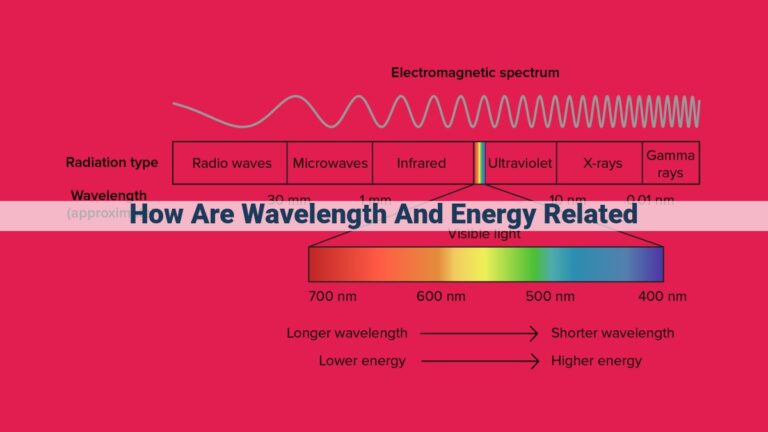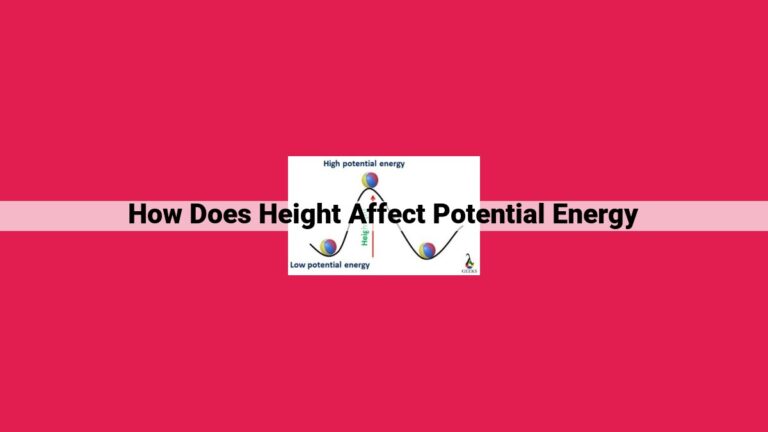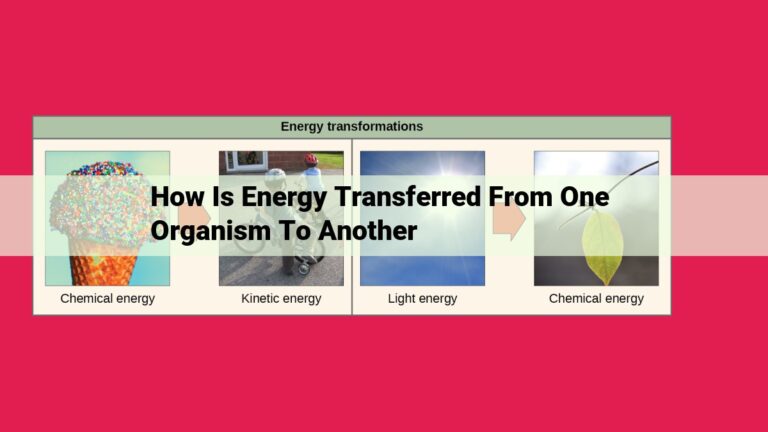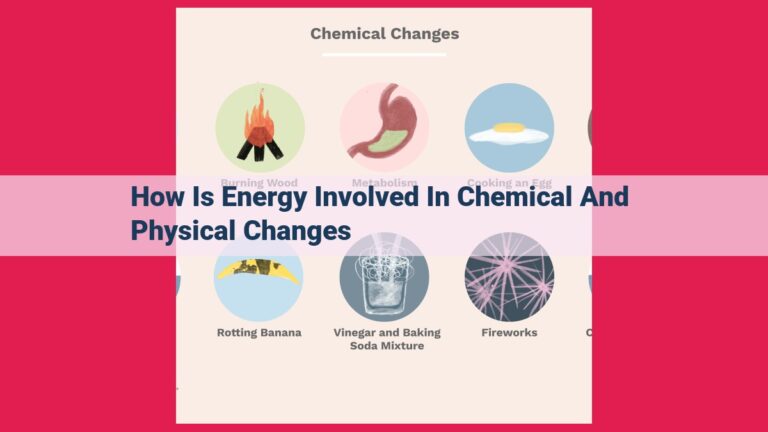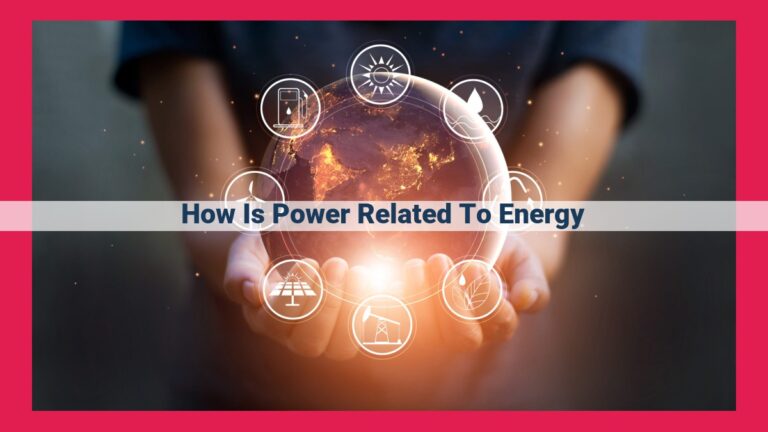Interdependence Of Photosynthesis And Cellular Respiration In Plant Cells
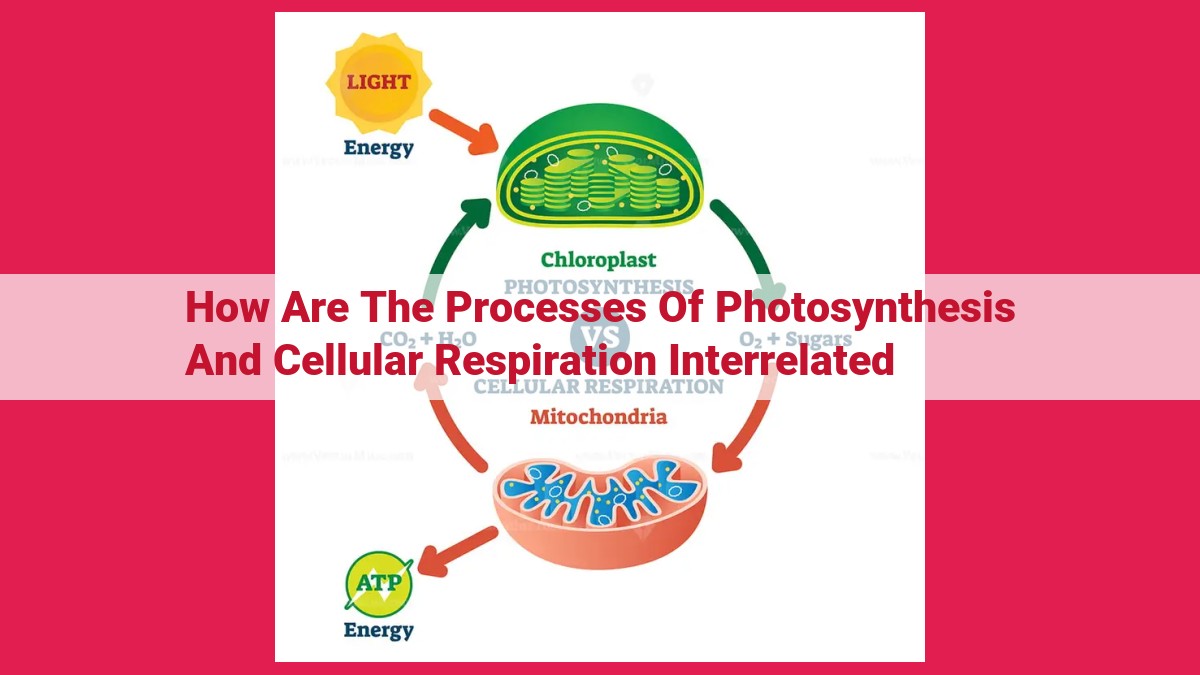
Photosynthesis and cellular respiration are interdependent processes in plant cells. Photosynthesis produces glucose and oxygen, which are used as reactants in cellular respiration. Respiration releases carbon dioxide, which is used in photosynthesis. Both processes generate ATP, the energy currency of cells. Photosynthesis is an anabolic (building) process, while respiration is a catabolic (breaking down) process. Light and carbon dioxide are required for photosynthesis, while oxygen is consumed in respiration. Both processes involve cyclic electron flow, generating ATP and regulating cellular functions.
The Interplay of Photosynthesis and Cellular Respiration: A Symbiotic Dance Within Plant Cells
In the verdant tapestry of nature, the intertwining melodies of photosynthesis and cellular respiration are a harmonious duet that sustains life on our planet. Within the leafy realm of plant cells, these two intricate processes engage in a ceaseless interplay, collaborating to produce the essential building blocks of life.
Photosynthesis, the process by which green plants capture the radiant energy of sunlight, paints the canvas of existence with vibrant hues. It breathes life into glucose, the primary fuel that powers cellular activities, and oxygen, the life-giving gas that animates our every breath. In a mesmerizing ballet of electrons, photosynthesis captures the energy of photons, orchestrating the synthesis of ATP, the universal currency of cellular energy.
Meanwhile, cellular respiration, a masterful choreographer, breaks down glucose, extracting its stored energy and releasing carbon dioxide, another vital element. This intricate dance generates ATP, empowering cells with the vitality to carry out their myriad functions.
Like two sides of a symbiotic coin, photosynthesis provides the raw materials for cellular respiration, while respiration reciprocates by supplying the energy that drives photosynthesis. In this harmonious exchange, carbon dioxide released by respiration is eagerly embraced by photosynthesis, fueling the creation of new glucose molecules.
This elegant interplay extends beyond energy exchange. Photosynthesis and cellular respiration share a common rhythm, each employing the cyclic flow of electrons to generate ATP. This elegant mechanism provides a steady beat that ensures a continuous supply of energy within plant cells.
As the sun rises, casting its golden rays upon the horizon, photosynthesis takes center stage, capturing light energy and converting it into the vital molecules that sustain life. With the onset of night, cellular respiration takes up the mantle, utilizing the stored energy from photosynthesis to power the countless processes that drive cellular growth and vitality.
Within this exquisite dance of life, photosynthesis and cellular respiration maintain a delicate balance, ensuring the harmonious functioning of plant cells. Feedback mechanisms, like deft conductors, orchestrate the symphony, ensuring that the processes neither overpower nor underperform. Through their seamless collaboration, these two intricate processes weave the intricate fabric of life, providing the sustenance and energy that underpins the very existence of our planet.
Shared Reactants and Products: A Symbiotic Exchange
In the realm of cellular life, photosynthesis and cellular respiration are two vital processes that work hand in hand, exchanging reactants and products to sustain the delicate balance and energy requirements of living cells.
Photosynthesis, occurring primarily in plant cells, is the process that harnesses the energy of sunlight to convert carbon dioxide and water into glucose and oxygen. Glucose, the primary fuel for cellular respiration, provides the energy cells need to power their functions. Oxygen, released as a byproduct of photosynthesis, is essential for cellular respiration to occur.
On the other side of the coin, cellular respiration takes place in all living cells, breaking down glucose and oxygen to generate energy in the form of adenosine triphosphate (ATP). As a byproduct of cellular respiration, carbon dioxide is released, which serves as the primary reactant for photosynthesis. This intricate exchange of reactants and products between photosynthesis and cellular respiration creates a symbiotic relationship, where one process provides the essential ingredients for the other.
Photosynthesis → Glucose + Oxygen → Cellular Respiration → Carbon Dioxide + Water
This continuous cycle ensures that cells have a steady supply of energy (ATP) to carry out their metabolic activities, while also maintaining a balance of oxygen and carbon dioxide in the atmosphere. It’s a remarkable example of nature’s efficiency and the interconnected nature of life’s processes.
ATP Generation: The Energy Currency of Cells
One of the most important roles of photosynthesis and cellular respiration is ATP generation, the energy currency of cells. ATP stands for adenosine triphosphate, and it acts as the fuel for a wide range of cellular activities, including muscle contraction, nerve impulses, and chemical synthesis.
Photosynthesis produces ATP through a light-dependent process that occurs in the thylakoid membranes of chloroplasts. Light energy is captured by chlorophyll and used to split water molecules, releasing oxygen as a byproduct. The energy released from this process is then used to generate ATP.
Cellular respiration, on the other hand, produces ATP through a series of chemical reactions that occur in the mitochondria. These reactions involve the breakdown of glucose, which is a product of photosynthesis. As glucose is broken down, energy is released and captured in the form of ATP.
The ATP generated by both photosynthesis and cellular respiration is then used to power a variety of cellular functions. These include:
- Muscle contraction: ATP provides the energy needed for muscles to contract.
- Nerve impulses: ATP is used to transmit nerve impulses throughout the body.
- Chemical synthesis: ATP is required for the synthesis of new molecules, such as proteins and nucleic acids.
Without ATP, cells would not be able to function properly. The constant generation of ATP by photosynthesis and cellular respiration is therefore essential for life.
Anabolic vs Catabolic Pathways: The Interconnected Processes of Life
In the intricate symphony of life, two fundamental processes dance in perfect harmony: photosynthesis and cellular respiration. While at first glance they may seem like opposing forces, a closer examination reveals their interdependence, forming a dynamic cycle that sustains all living organisms.
Photosynthesis, the anabolic process, is a masterful act of creation. Plants, like tiny architects, capture sunlight and carbon dioxide, transforming them into glucose, the building block of life. This intricate process weaves together complex molecules, providing the essential raw materials for all living things.
In contrast, cellular respiration is a catabolic process, a controlled demolition. Cells harness the energy stored in glucose and break it down, releasing ATP, the universal energy currency. This energy powers every aspect of cellular life, from muscle contractions to the synthesis of new molecules.
Photosynthesis provides the building blocks for respiration, while respiration provides the energy for photosynthesis. This intricate symbiotic relationship ensures a continuous flow of essential molecules and energy throughout the biosphere.
Imagine a vast construction site where workers build and demolish in perfect coordination. Photosynthesis, with its abundant resources, is like a team of architects and builders, erecting the framework of life. Respiration, on the other hand, is like a recycling team, breaking down waste materials and releasing energy to fuel the construction efforts.
Together, these processes maintain a delicate balance within cells and ecosystems. They orchestrate the symphony of life, ensuring a harmonious dance of creation and destruction, sustaining the very essence of existence.
Cyclic Electron Flow in Photosynthesis and Cellular Respiration
Photosynthesis and cellular respiration, two essential processes in plants and animals, are intricately intertwined through a continuous flow of electrons. This cyclic electron flow plays a crucial role in the generation of ATP, the energy currency of cells, and serves as a regulatory mechanism.
In photosynthesis, a process that occurs in plant cells, light energy is captured by chlorophyll and used to generate oxygen and glucose. During this process, a series of electron carriers in the thylakoid membranes of chloroplasts undergo a cyclic electron flow. This flow generates ATP without producing oxygen.
Cellular respiration, on the other hand, is a process that occurs in the mitochondria of all living organisms. In this process, glucose and oxygen are used to generate ATP and carbon dioxide. During cellular respiration, a cyclic electron flow also occurs in the electron transport chain. Similar to photosynthesis, this flow generates ATP without producing oxygen.
The cyclic electron flow in both photosynthesis and cellular respiration uses a common set of electron carriers, including cytochromes and plastocyanin. These carriers pass electrons from one to another, creating a continuous flow. This flow generates a proton gradient across the thylakoid membrane in photosynthesis and the inner mitochondrial membrane in cellular respiration.
The proton gradient drives the synthesis of ATP through a protein complex called ATP synthase. This enzyme allows protons to flow down the gradient, using the energy to phosphorylate ADP to ATP.
The cyclic electron flow not only generates ATP but also serves as a regulatory mechanism. In photosynthesis, the flow can be adjusted to meet the changing light conditions, ensuring that the plant can maximize energy production. In cellular respiration, the flow can be regulated in response to the energy demands of the cell.
Overall, the cyclic electron flow in photosynthesis and cellular respiration is a crucial process that ensures a continuous supply of ATP, the energy currency of cells. Its regulatory function helps maintain cellular homeostasis and allows organisms to adapt to changing environmental conditions.
Photosynthesis and Cellular Respiration: A Dynamic Dance
In the intricate theatre of life, two cellular processes dance in perfect harmony: photosynthesis and cellular respiration. These processes, while seemingly opposites, are intimately interwoven, forming a symbiotic relationship that sustains every living organism on Earth. Let’s delve into their captivating interplay, starting with the essential roles of light and carbon dioxide.
Light and Carbon Dioxide, the Fuel of Life
Photosynthesis, the life-giving process, harnesses the energy of sunlight to transform carbon dioxide and water into glucose, the building block of life. Like skilled alchemists, plants capture sunlight’s energy and use it to power their metabolic machinery. This light energy is the spark that powers the chemical reactions that convert carbon dioxide into glucose.
But wait, there’s more! Cellular respiration flips the script. It takes the glucose produced by photosynthesis and breaks it down, liberating energy in the form of ATP, the body’s fuel currency. In this process, carbon dioxide, once absorbed by photosynthesis, is released back into the atmosphere.
This intricate tango between photosynthesis and cellular respiration ensures a constant supply of energy and building blocks for all life forms. Photosynthesis provides the fuel (glucose), while cellular respiration powers the body’s metabolic engines. It’s a beautiful self-sustaining cycle that’s been fueling life on Earth for billions of years.
Water and Oxygen: The Interplay of Photosynthesis and Cellular Respiration
A Tale of Two Processes
In the realm of plant cells, a captivating dance unfolds, where two fundamental processes intertwine: photosynthesis and cellular respiration. These processes, like yin and yang, play off each other, creating a harmonious balance that sustains life.
Photosynthesis: The Green Machine
Photosynthesis, the lifeblood of plants, harnesses the energy of sunlight to transform water and carbon dioxide into glucose, the building block of life. As chlorophyll absorbs light energy, it triggers a cascade of reactions that release precious oxygen as a byproduct. This oxygen molecules escapes into the atmosphere, replenishing the air we breathe.
Cellular Respiration: The Energy Generator
Cellular respiration, on the other hand, is the catabolic counterpart to photosynthesis. It breaks down glucose molecules, utilizing the oxygen we inhale to release carbon dioxide and water as waste products. This process generates ATP, the energy currency of cells, which fuels the myriad activities that keep plants alive.
A Symbiotic Exchange
Photosynthesis and cellular respiration are not isolated processes; they engage in a continuous exchange of crucial molecules. The oxygen released by photosynthesis is the vital ingredient for cellular respiration, which in turn produces the carbon dioxide that photosynthesis relies on for its raw material.
Maintaining Balance
This symbiotic relationship between photosynthesis and cellular respiration ensures a delicate balance of water and oxygen in the environment. Photosynthesis consumes water and releases oxygen, while cellular respiration consumes oxygen and releases water. This cyclical flow maintains a steady supply of these essential molecules, sustaining the delicate equilibrium of our planet.
Regulation: A Check and Balance System
The interplay of photosynthesis and cellular respiration is finely regulated by feedback mechanisms that ensure their coordinated functioning. These mechanisms sense changes in light intensity, carbon dioxide levels, and other environmental factors, adjusting the rates of each process to maintain cellular homeostasis.
As light intensity increases, photosynthesis ramps up, producing more oxygen and glucose. Conversely, when carbon dioxide levels decline, photosynthesis slows down, reducing oxygen production. Similarly, cellular respiration adjusts its activity based on the availability of oxygen and glucose, ensuring the efficient utilization of these molecules.
In this captivating tale of two processes, we witness the intricate dance of life, where photosynthesis and cellular respiration intertwine, each playing a vital role in the survival of plants and the balance of our environment.
The Interconnected Dance of Photosynthesis and Cellular Respiration: A Symphony of Life
In the realm of plant cells, two intricate processes intertwine in a harmonious ballet, each playing a vital role in sustaining life. Photosynthesis, the life-giving process of converting sunlight into energy, and cellular respiration, the process of breaking down glucose to release energy, are inseparable partners in the dance of life.
Coordinating the Cellular Symphony
Just as a symphony requires a conductor to ensure harmony, both photosynthesis and cellular respiration are guided by feedback mechanisms that maintain cellular homeostasis. These mechanisms monitor the levels of reactants and products, adjusting the activity of each process to maintain optimal balance.
Feedback Mechanisms: The Invisible Maestro
One such mechanism is the regulation of ATP production. When cellular respiration produces abundant ATP, it signals a decrease in demand for photosynthesis. In response, photosynthesis slows down to prevent an oversupply of ATP. Conversely, when cellular respiration depletes ATP levels, photosynthesis accelerates to replenish the supply.
Another feedback mechanism involves carbon dioxide. As cellular respiration consumes oxygen, it releases carbon dioxide. This buildup of carbon dioxide triggers a decrease in respiration and an increase in photosynthesis. Photosynthesis utilizes this carbon dioxide as a building block, ensuring a steady supply for cellular respiration.
Synergistic Cycle: The Interdependence of Life
This intricate interplay creates a synergistic cycle where photosynthesis provides the building blocks for cellular respiration, and cellular respiration fuels photosynthesis. Glucose, the product of photosynthesis, is the primary energy source for cellular respiration. Conversely, oxygen, released during photosynthesis, is consumed by cellular respiration. This continuous exchange ensures a constant supply of energy and nutrients for the plant cell.
Light and Dark: The Yin and Yang of Cellular Processes
Light triggers photosynthesis, while carbon dioxide drives cellular respiration. This differential response to light and carbon dioxide allows plants to adapt to dynamic environmental conditions, maintaining a delicate balance between the two processes.
Water and Oxygen: The Balancing Act
In a remarkable display of coordination, photosynthesis releases oxygen and consumes water, while cellular respiration consumes oxygen and releases water. This delicate balance ensures a constant supply of these vital molecules, sustaining life on Earth.
The symbiotic relationship between photosynthesis and cellular respiration is a testament to the intricate and interconnected nature of life. These processes work in harmony, driven by feedback mechanisms that maintain cellular equilibrium and support the growth and vitality of plants. By delving into the depths of this cellular symphony, we not only appreciate the complexity of life but also gain a deeper understanding of the essential processes that sustain our planet.
